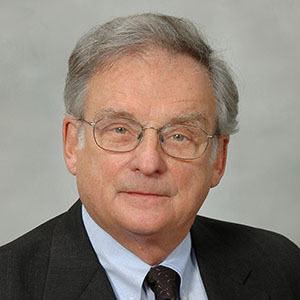Fields Pediatric Immunology Name Arthur Ammann | ||
 | ||
Born August 12, 1936 (age 89) ( 1936-08-12 ) Books (In)Visible: From Obscure to Valuable | ||
Dr arthur j ammann 58 2007 distinguished service to society award
Arthur J. Ammann (born August 12, 1936) is a pediatric immunologist and advocate known for his research on HIV transmission and his role in the development of the first successful vaccine to prevent pneumococcal infection in 1977. Ammann is currently Founder of Global Strategies for HIV Prevention and Clinical Professor of Pediatrics at the University of California, San Francisco Medical Center (UCSF).
Contents
- Dr arthur j ammann 58 2007 distinguished service to society award
- Education
- Early research
- Pneumococcal vaccine
- HIV transmission and treatment
- Advocacy
- Awards and honors
- Selected publications
- References
Education
Ammann was born in Brooklyn, New York to German parents, neither of whom ever finished grade school. He graduated from Brooklyn Technical High School and attended Wheaton College in Illinois, continuing on to study medicine at New Jersey Medical School, where he received his M.D. in 1962. Ammann later became the first pediatric immunologist at UCSF, where he served his residency in pediatrics.
Early research
In 1966, for the first time, Ammann and Richard E. Stiehm documented Immunoglobulin A (IgA) as the major immunoglobulin class in breastmilk, present in high concentrations in colostrum mature breastmilk. They postulated that the protection afforded to infants by breast-feeding was a result of exposure to local antibodies contained within IgA rather than absorption of maternal antibody into these infants circulation.
Ammann, Stiehm and James D. Cherry identified that there are elevated levels of Immunoglobulin M (IgM) in the cord blood of newborn infants born with the congenital rubella syndrome. This was a major step forward in understanding the fetal immune response and developing diagnostic tools to differentiate between in utero infection with infectious agents such as rubella, toxoplasmosis and cytomegalovirus from infections acquired following birth
In 1973, Ammann lead his research team to perform the first successful reconstitution of T-cell immunity in a patient with severe combined immunodeficiency. This was achieved through fetal thymus transplantation. This study demonstrated that the thymus holds only the potential of developing T cells and will not result in reconstitution of B cell immunity as was subsequently shown by others who utilized bone marrow transplantation, which contained multi-potential stem cells.
Working with Dr. E.R. Giblett in 1972, Ammann described the first patient with purine nucleoside phosphorylase deficiency in association with a unique genetic profile that included depressed T-cell immunity with normal levels of immunoglobulins. The resulting publication was listed as one of the 500 most widely cited articles in 1984. Ammann's discovery represented an essential step to understanding new treatments for immunodeficiency diseases and developing drugs that could interfere with the immune response.
Pneumococcal vaccine
From 1971 to 1985, Ammann was Director of Pediatric Immunology and Clinical Research Center at UCSF. It was during this period that Ammann performed a series of clinical trials aimed at protecting children with sickle cell anemia and the elderly from pneumococcal infection, a bacterium that causes fatal infection. He and his colleagues were successful in creating the first U.S. Food and Drug Administration-approved vaccine effective against the bacteria; it granted individuals immunity against a life-threatening infection. Ammann's vaccine has since been expanded and its immunogenicity has been improved, increasing the effectiveness of the vaccine in young infants. This discovery has saved the lives of millions of individuals by preventing pnuemococcal infection, particularly in children and the elderly.
HIV transmission and treatment
In 1981, while working at UCSF, Ammann observed immunodeficiency disorders in children that mirrored those of gay men who had contracted the Human Immunodeficiency Virus. Ammann's investigations into the cause of the symptoms lead him to identify two new means of transmission, in utero mother to infant and blood transfusions. This discovery changed the perception of HIV as an epidemic solely within the gay community.
In 1985, Ammann left his position at UCSF in order to work with the biotechnology firm, Genentech. There he developed clinical products focused on HIV/AIDS, and although while with Genentech a successful vaccine was not developed, the discoveries made by Ammann's research team were used by other researchers in a partially successful study performed in Thailand in 2009.
In 1994, Ammann was selected to become a member of the Presidential National AIDS Task Force on Drug and Vaccine Development. Three years later, in 1996, he was recognized by POZ Magazine as one of the fifty most influential AIDS researchers.
Advocacy
Ammann has spent much of his life fighting injustices within the health care system, nationally and internationally. From 1992 to 1996 he served as Director of Research Programs for the Pediatric AIDS Foundation. Ammann is also the Chairman of the Conference on Global Strategies for Prevention of HIV Transmission from Mothers to Infants.
Ammann became a member of the American Foundation for Aids Research (AmFAR) Board of Directors in 1988, and was also appointed Chairman of the AmFAR Scientific Advisory Committee. From 1997-1998 Ammann served as President of AmFAR. In these positions, Ammann has fought for an increase in research funding in HIV, in particular for women and children, and the development of more cost-effective treatments.
In 1997, Ammann founded Global Strategies for HIV Prevention. In his current position as President, Ammann advocates for the needs of the most marginalized populations that are affected by the HIV epidemic. His organization is aimed at helping to prevent HIV transmission from mothers to infants in order to slow the spread of the HIV virus.
